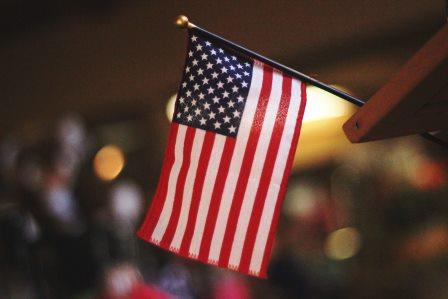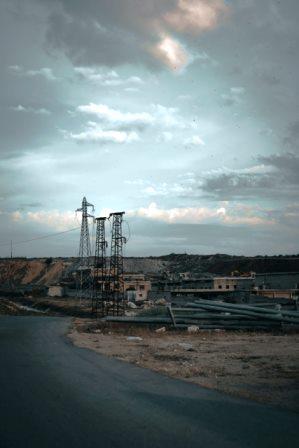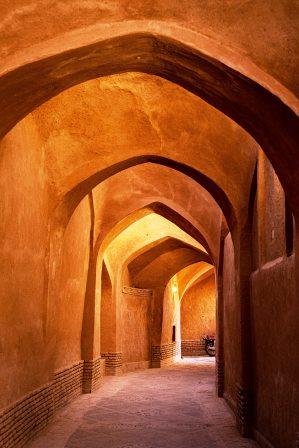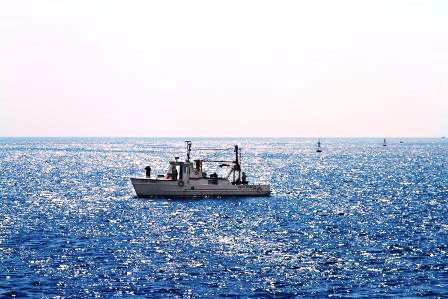Breaking
- MENU

Jared Kushner, son-in-law and senior advisor of President Donald Trump, unveiled the economic peace plan titled ‘Peace to Prosperity’ in a two-day workshop in Manama on June 25-26, 2019. The plan is the first part of the Middle East peace plan also known as ‘Deal of the Century’ with its political part expected to be unveiled by November. The plan to have a ‘Deal of the Century’ was announced by President Trump in November 2017, a month before recognizing Jerusalem as the capital of Israel and planning to shift US embassy from Tel Aviv to Jerusalem, probably as a compensation to Palestine. The workshop was jointly hosted by the US Treasury Department, the White House, the Government of Bahrain, and the Bahraini Ministry of Finance.
Important Aspects of the Plan
Published three days before it was tabled in Manama, the economic peace plan is a forty-page exhaustive document that resembles a promotional brochure with promises of empowerment through various tools including education, workforce development, gender inclusivity, science and technology, healthcare, art, culture and sports. It assures unleashing of economic potential by building a foundation for growth and business investment; opening the West Bank and Gaza by connecting it through road and rail; constructing infrastructure for providing power, water and digital services; promoting private sector in tourism, agriculture, housing and manufacture; and promoting regional development and integration. Lastly, it promises to enhance Palestinian governance by creating a better business environment, through institution-building and by improving government operations. The economic document themed ‘peace to prosperity’ aims to contribute around US$50 billion for Palestinian territories (US$28 billion), Jordan (US$7.5 billion), Egypt (US$9 billion) and Lebanon (US$6 billion) in a period of ten years and mentions about 179 infrastructure and business projects including a US$5 billion transport corridor to connect West Bank and Gaza.
The economic peace plan falls short of expectations owing to its generalized nature and a tendency to look at Palestine through a lens that negates its exclusive problems. It mentions economic investment plans without taking into consideration the blockades forced by Israel on Palestinians. For example, it mentions about the need to provide high-speed 4G-5G data services for Palestinians, however Israel lifted a ban on 3G wireless technology for Palestinian mobile services only in 2018. Similarly, the plan compares the Palestinian model to Germany, Sweden, Singapore, Taiwan, Japan, South Korea, Hong Kong, Rio de Janeiro and Dubai that do not have a political situation akin to Palestine.
The plan intends to replace the United Nations Relief and Works Agency for Palestine Refugees in the Near East (UNRWA) and the background was being prepared since February 2019 when US stopped all aid to Palestinians in the West Bank and Gaza after the US Congress passed the Anti-Terrorism Clarification Act (ATCA). The US has been the largest individual donor to UNRWA, pledging about one- third of the agency’s US$1.1 billion annual budget. The economic plan seeks US$50 billion investment from Gulf countries; however, no country has pledged any amount after the Manama workshop as the lack of complete control of Palestinians over territory and restrictions on movement makes investment risky. Sixty per cent of the West Bank is under Israeli control and is off limits for the Palestinians. The ‘Breaking Down Barriers’ Border Crossing Points Upgrade project in the West Bank and Gaza worth US$900 million mentions investment in new infrastructure and capacity-building programmes, however, it conveniently skips Israeli control over border crossing with Jordan.
Mixed Regional Response
The economic document was released in the Bahrain Bay area of Manama in the presence of a group of Arab finance ministers and businessmen from the US, Europe and the Middle East Despite some enthusiasm shown by countries such as Saudi Arabia, the UAE and Morocco, the announcement of the economic plan garnered a largely negative response. Hanan Ashrawi, executive member of PLO dubbed the plan as “just an economic workshop” while Palestinian Finance Minister Shukri Bishara said that “the sequence of the plan-economic revival followed by peace is unrealistic and an illusion.” The Palestinian Authority boycotted the Bahrain meeting emphasizing a political solution as a precondition to peace. Liberals in Egypt designated the conference as an attempt to “consecrate and legitimize” occupation of Arab land. Nabih Berri, Parliament speaker of Lebanon stated that “billions of dollars cannot lure Lebanon into bartering its principles” while Hezbollah referred to the plan as “a historic crime” as Iraq and Lebanon did not attend the conference. Ahmed AboulGheit, Head of the Arab League warned that there would be no peace deal without the Palestinian State. It is interesting to note that US Secretary of State Mike Pompeo referred to the plan as ‘un-executable’.
Bahrain hosted the conference being home to the US Navy’s fifth fleet, a major non-NATO ally of US and a signatory to the Arab 2002 initiative which envisages engagement with Israel only after a comprehensive peace agreement that addresses complicated final status issues. Bahrain’s positive inclination towards normalizing relations with Israel is evident from its recent support to Israel’s military action against Shia strongholds in Syria. Rabbi Marc Schneier, King Hamad’s interfaith adviser, quoted the Bahraini king as saying in 2016, “Our only hope for a strong, moderate Arab voice in the Gulf is a strong Israel.” Though Israel was not invited officially, Bahrain allowed numerous Israeli journalists to participate in the conference, and Sheikh Khalid bin Ahmed al-Khalifa, Bahrain’s foreign minister said “Israel is a country in the Middle East. Israel is part of this heritage of this whole region historically. So the Jewish people have a place among us.” He mentioned during the anti-Iran Warsaw Conference that confronting “the Iranian threat” was more important than dealing with the Israel-Palestine issue. In recent years, Arab-Israel issue has gone on back burner as Gulf Iran tensions have escalated.
Other Arab Gulf countries that responded positively were Saudi Arabia, the UAE and Qatar; and were represented by their finance or economy ministers. Riyadh supported Israel’s offensive against Hamas during the 2014 Gaza war and Israel nodded to the sale of German tanks to the Saudis. Israel has a diplomatic presence at International Renewable Energy Agency in Abu Dhabi and both the countries participated in joint military exercises since 2016. Notably, the positive response could be a quest to pave the way for normalisation of relations with Israel and strengthening of the Gulf-Israel alliance vis-à-vis Iran. However, Kuwait and Oman kept a safe distance and did not participate in the deliberations and instead made pro-Palestine gestures. In the week of the conference, Kuwait reaffirmed its commitment to the Palestinian cause of statehood, and Oman made an announcement to open an embassy in Ramallah. Kuwaiti parliamentarian Osama al-Shaheen stated, “Deal of the century is a ... one-sided concession, the Arab side, while the occupier wins everything: land, peace and Gulf money.”
In sum, the economic peace plan does not hold much ground in isolation and it comes with a political rider that is expected to be unveiled by November 2019. Jared Kushner said, “To be clear, economic growth and prosperity for the Palestinian people are not possible without an enduring and fair political solution to the conflict.” Lastly, nothing substantial should be expected from the economic plan as the two primary parties did not attend the meet in Manama. Palestine boycotted the economic peace plan workshop in Bahrain whereas Israel was not invited to the meet so as to emphasize on the economic nature of the workshop. While there is a need to resume the Middle East peace process, it is important that the US and its regional allies understand that the Israeli-Palestinian conflict cannot be resolved without addressing the core issues including statelessness of the Palestinians and the Jerusalem question.
Note: This article was originally published in West Asia Watch: Trends and Analysis, Vol. 2 Issue 3, May-June 2019 (IDSA, New Delhi), and has been reproduced with permission. Web Link
As part of its editorial policy, the MEI@ND standardizes spelling and date formats to make the text uniformly accessible and stylistically consistent. The views expressed here are those of the author and do not necessarily reflect the views/positions of the MEI@ND. Editor, MEI@ND: P R Kumaraswamy

Lakshmi Priya is a Research Analyst at the Manohar Parrikar Institute for Defence Studies and Analyses, New Delhi. She has a Ph.D. in West Asian Studies from Jawaharlal Nehru University and her doctoral thesis was on Status of Women in Syria under Hafiz al-Assad, 1970-2000 and she wrote her M. Phil dissertation on India’s Relations with Syria, 1991-2008. Her research interests include domestic and foreign policy of Syria, Indo-Gulf relations and gender and feminist discourse in the Middle East. Before joining MP-IDSA, she was a researcher with the Indian Social Institute, New Delhi, and has worked at the Office of the Cultural Attaché, Embassy of the Kingdom of Saudi Arabia, New Delhi. She has also worked as an editor for Delhi-based Arihant Publishers. Dr. Priya has a Masters in Arabic from the School of Languages in JNU and is fluent in English, Hindi and Arabic. In addition to West Asian studies, she has an interest in international relations and political theory. She has published research articles Social Action, Journal of South Asian and Middle Eastern Studies and Journal of West Asian Studies She regularly contributes articles and commentaries on contemporary developments in the Middle East.

POLITICAL Israel, UAE and Bahrain sign Abraham Accords WASHINGTON (16 September, 2020): Israel.....

Syria reported its first case of COVID-19 on March 23, 2020, while its first death was confirmed on .....

In a first since facing an uprising and civil war, Syrian President Bashar al-Assad visited Tehran o.....

India joined the Jeddah Amendment to the Djibouti Code of Conduct as an observer state following a h.....
